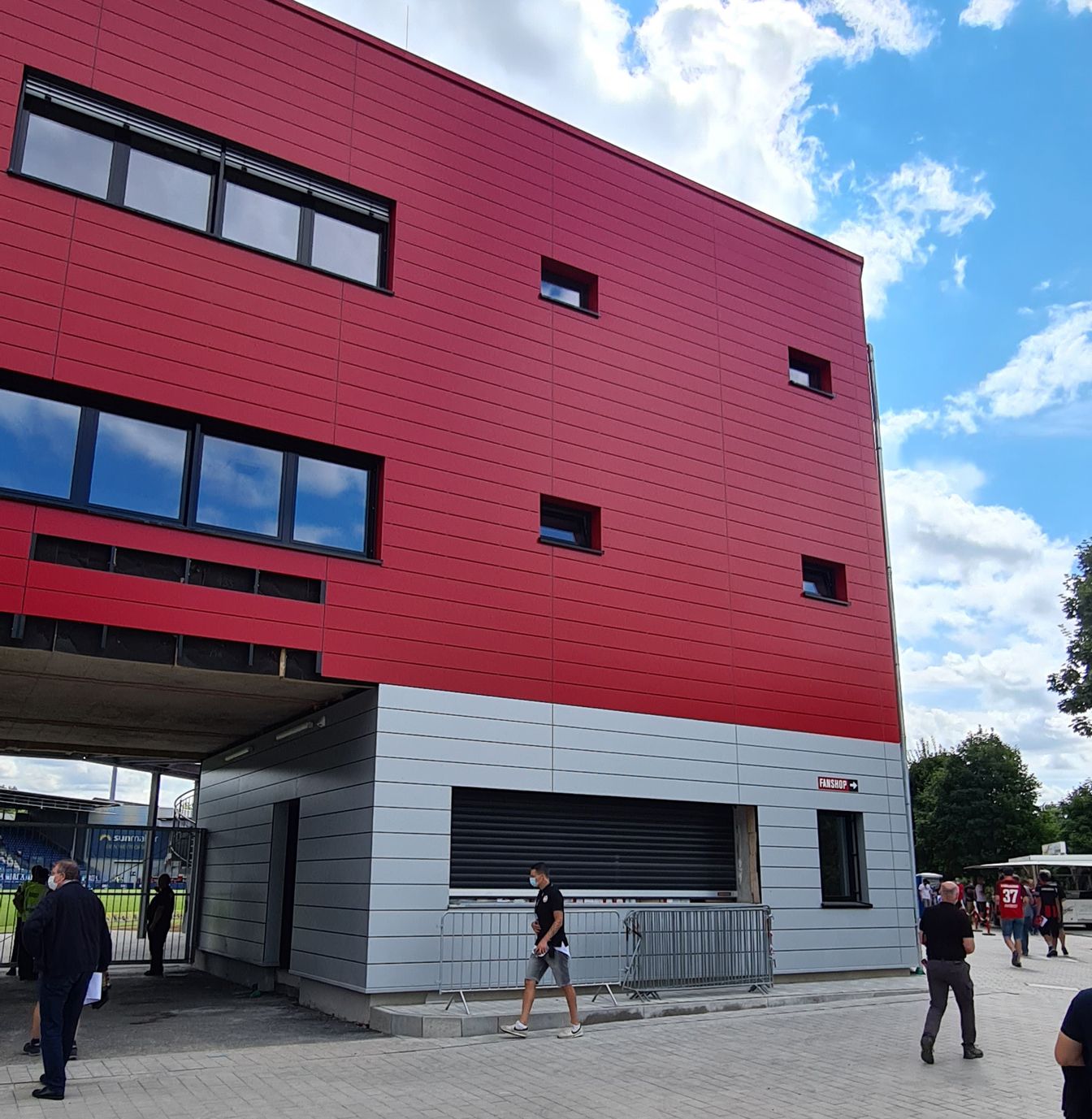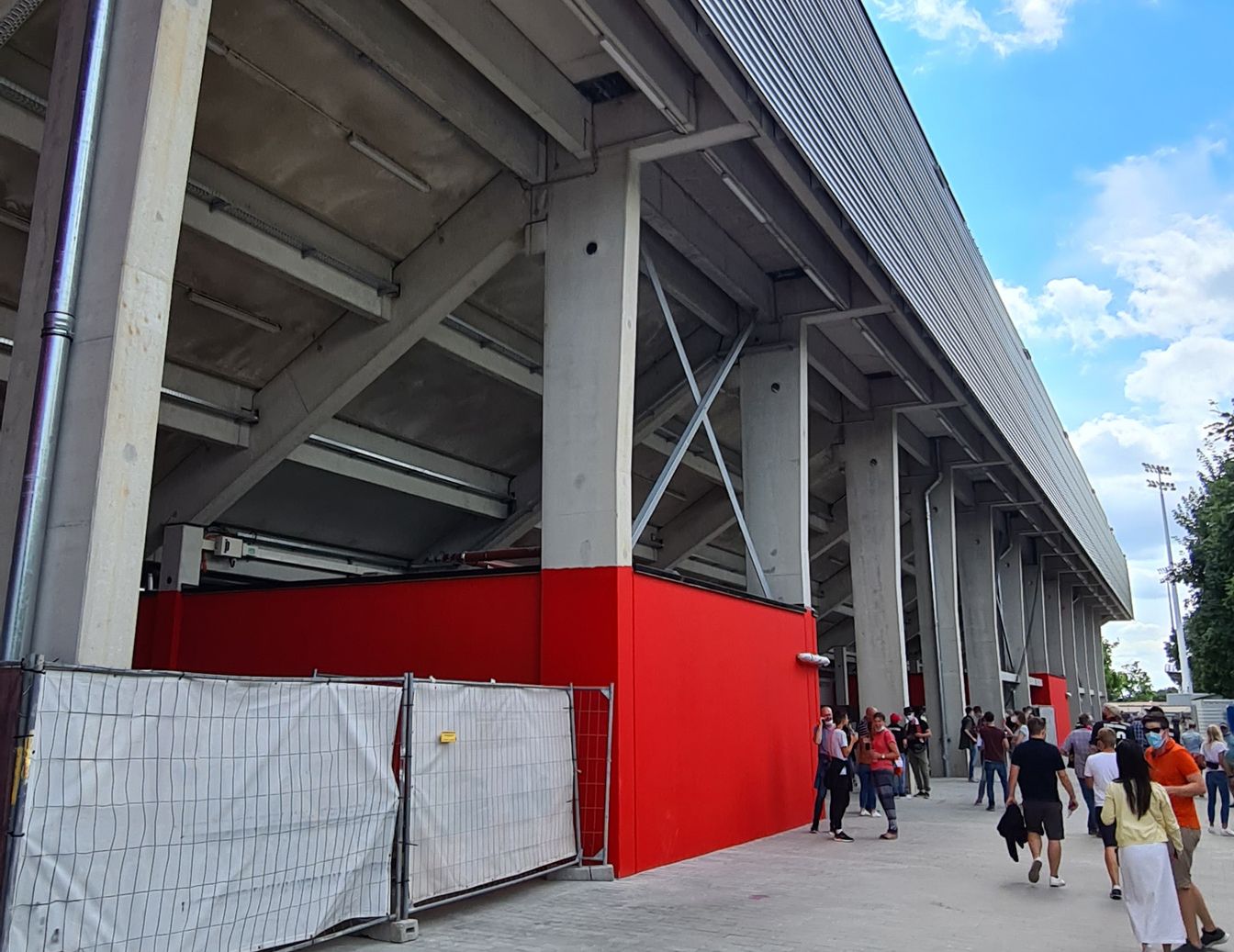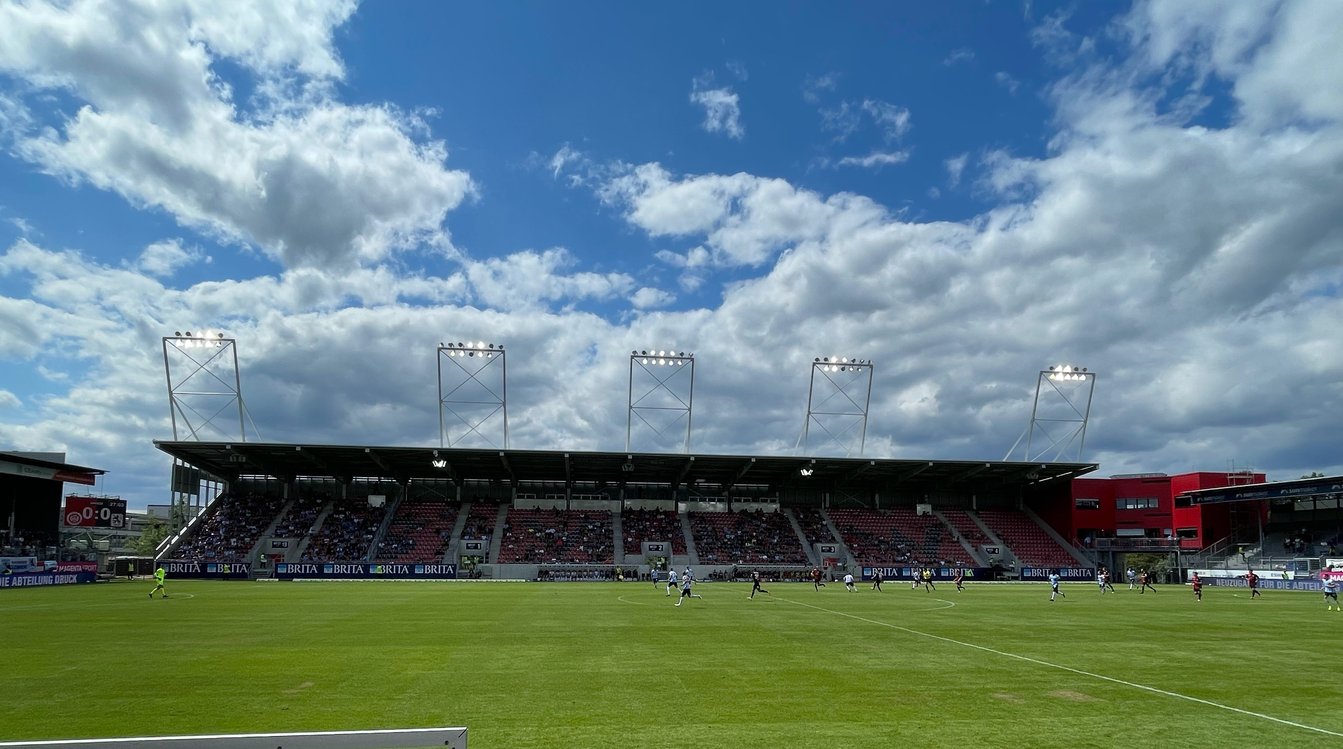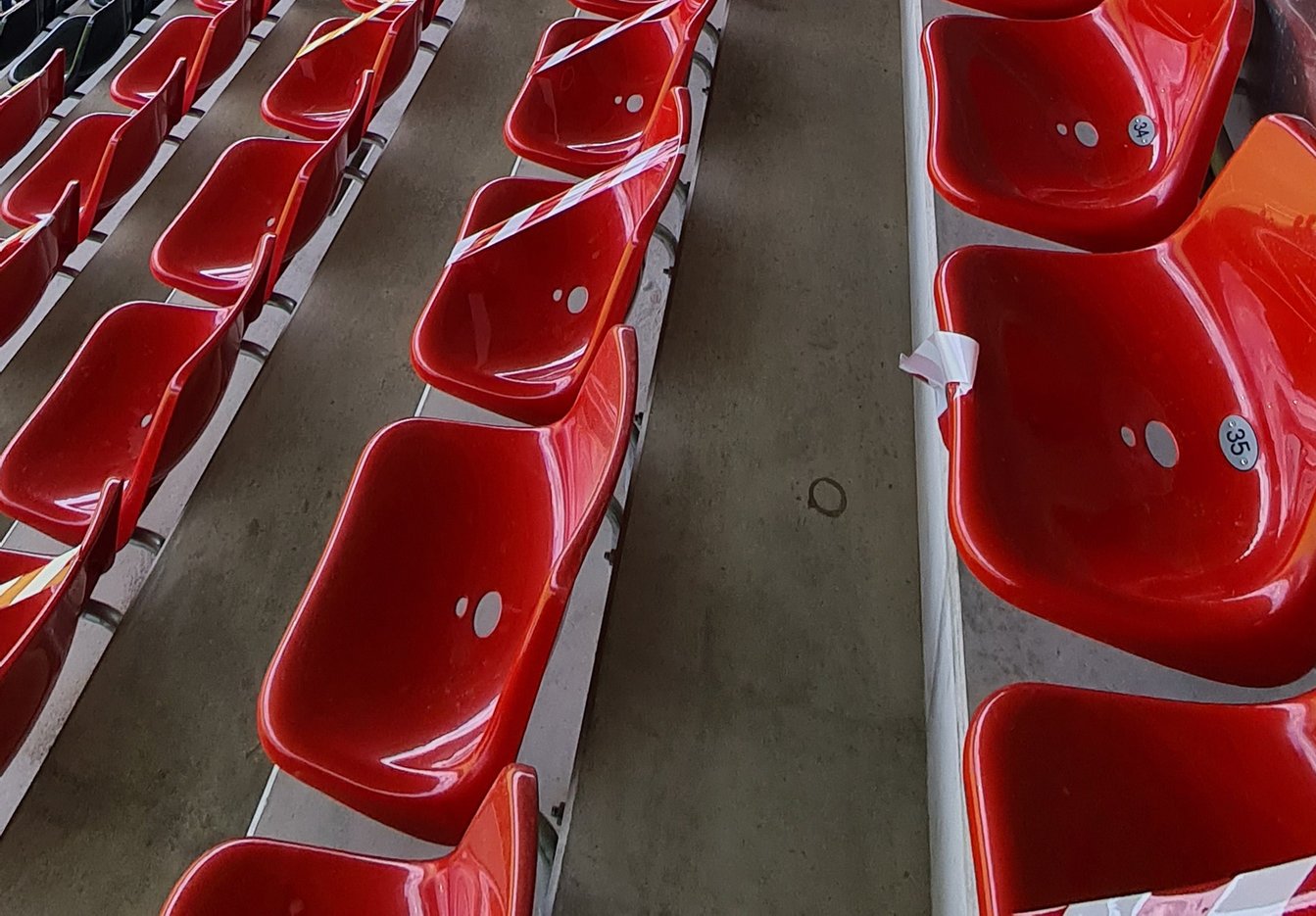Germany: Brita-Arena no longer a tin can. Well, not entirely
source: StadiumDB.com [MK]; author: michał
 Mocked for years and very unpopular, the stadium in Wiesbaden has changed thanks to a new main grandstand. It’s the first non-temporary structure, first not built primarily with steel.
Mocked for years and very unpopular, the stadium in Wiesbaden has changed thanks to a new main grandstand. It’s the first non-temporary structure, first not built primarily with steel.
Advertisement
Built in great rush (just 4 months!), Brita-Arena never really enjoyed good press. The stadium is a compromise, not a dream-come-true. Its perception hasn’t changed much since it opened in 2007, as proven by recent ranking ran by TestBerichte.de. The stadium ranked dead last out of 66 selected German stadiums.
The ranking might be unjust, it was based on popular vote and we all know that popular votes show who has the largest support, not who has the best stadium. After a decade of running Stadium of the Year we know it very well…
 © Florian Beck
© Florian Beck
Over the years, the stadium received pejorative nicknames like “tin can” or “swimming pool”. The first refers to tin cladding of the modular structure. The second, to water filtering giant Brita, whose blue branding adorned the stadium for years.
But that’s changing now. Brita’s logos are of course still present, but not as exposed. Blue is still the dominant colour of the stadium but SV Wehen’s red is starting to flourish. This is owed primarily to the new west stand, which was recently opened after prolonged construction.
New stand, finally concrete-based
It was supposed to be ready by the end of last year, but the ongoing pandemic caused the project to slip, especially with no fans being allowed inside. But this summer, after the field surface was replaced following holiday concert, it finally welcomed its first visitors.
 © Florian Beck
© Florian Beck
Construction began on March 11, 2019, and was expected to take over 1.5 years. Structurally, it’s a game-changing element for the stadium. It may still be prefabricated, but the prefabs are made of reinforced concrete, only covered with steel and tin. Aesthetics aside, this stand is to stay, won’t cause lifespan issues after 20-50 years.
Secondly, the project cost €10 million (initial estimates suggested €8-9m), which is not much less than the entire stadium back in 2007 (€14m). Importantly, it was largely covered by the football club, with the land of Hessen only supplying a grant of €3.5 million.
And finally, the stadium is simply larger, physically. The new grandstand is tall enough that two western floodlight masts were removed, new lighting is roof-based.
 © Florian Beck
© Florian Beck
Larger? Not in terms of capacity
Ironically, Brita-Arena isn’t bigger in terms of number of seats. Before the upgrade it was able to hold 12,566 people and the expansion was largely caused by DFL’s minimal requirement of 15,000 in 2. Bundesliga. In the event of promotion, the stadium would have to grow anyway.
However, well into the construction process, DFL reduced the criterion for smaller clubs like SV Wehen Wiesbaden (SVWW) to 12,500. So the extra capacity wasn’t needed in the end.
Wehen decided to make the best of their new situation and decided to install individual seats across the new stand, though it was initially planned as all-standing. This reduced its size to 2,900 seats and the stadium’s back to some 12,600.
 © Florian Beck
© Florian Beck
The change is interesting because each seated row consists of two standing rows, as depicted on the photo. Since seats are much preferred within the fanbase of Wehen, the solution should serve the club well. But, should capacity increase be needed in the end, all it takes is removing the seats.
Not the best inauguration
With the new season, fans are back in the stands across Germany, even if in limited numbers. For Wehen this means 4,882 fans instead of 12,000+. The club hoped that opening game against TSV 1860 (July 31) would be sold out after pre-pandemic attendance balanced around 5,000. but only 2,712 people turned out and first two games weren’t particularly lucky (two goalless draws).
However, on August 7 the stadium was finally sold out as Borussia Dortmund came to Wiesbaden for round one of the German Cup. Capacity crowd is good news but, as expected, Wehen were defeated 3:0 and are already out of the cup.
Why the new stand was worth it
Although the capacity increase didn’t end up needed, the list of upgrades is still very long. The main stand came with a new pavilion in the north-west corner, which finally meets high demands of the police and fire services. Additional floor space and improved spectator facilities are another benefit, as are new camera positions, finally up to standard.
In the end, the stadium would have needed new structures sooner than later, so it wasn’t a matter of ‘if’, rather ‘when’. The new stand brings a better identity for the stadium, even if further changes are needed in the long run. Once Wehen need to run another phase, the south end should follow. But, given the financial burden and consequences of the pandemic, it won’t happen too soon.
Author: Michał Karaś
Advertisement
 StadiumDB
StadiumDB